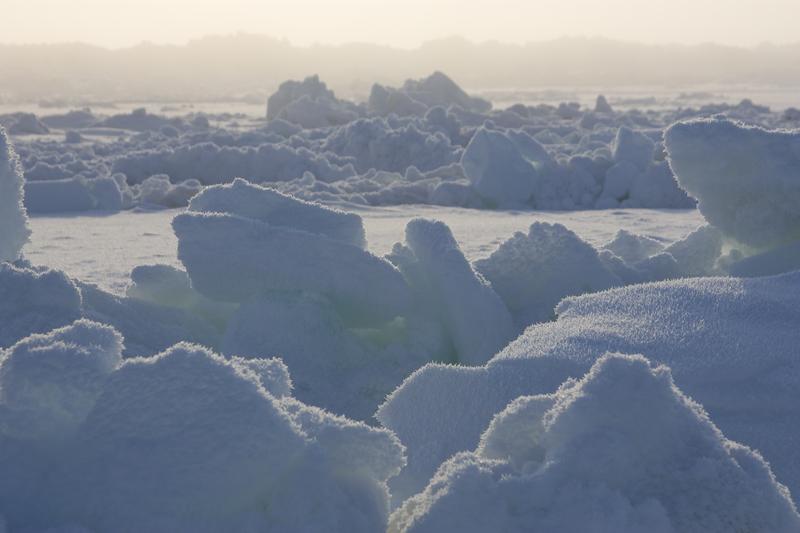Science News
Ice, Ice, Baby
August 16, 2011

Over the past several months, we’ve reported quite a bit on declining Arctic sea ice (see articles here and here, and a video, here). Two recent studies, one looking in the past and the other modeling into the future, suggest that though human activity is causing the rapid decline, Arctic sea ice is far from constant even under normal circumstances.
Last week, Danish researchers, reporting in the journal Science, took a look back at the Arctic Ocean—10,000 years back. This isn’t an easy task—sea ice comes and goes without leaving much of a record. But by looking at driftwood (yes, driftwood) gathered along the coast of northern Greenland, the team was able to construct a bit of a history.
“The driftwood is from the outset embedded in sea ice and reaches the north Greenland coast along with it. The amount of driftwood, therefore, indicates how much multiyear sea ice there was in the ocean back then,” lead author Svend Funder says.
The team examined the wood-type to determine its origin and then verified the age of the pieces with carbon-14 dating. One of the amazing discoveries: from approximately 8000 to 5000 years ago, when the temperatures were somewhat warmer than today, there was significantly less sea ice in the Arctic Ocean, probably less than 50% of the summer 2007 coverage, which was the absolutely lowest on record.
“Our studies show that there are great natural variations in the amount of Arctic sea ice,” Funder explains. “The bad news is that there is a clear connection between temperature and the amount of sea ice. And there is no doubt that continued global warming will lead to a reduction in the amount of summer sea ice in the Arctic Ocean. The good news is that even with a reduction to less than 50% of the current amount of sea ice, the ice will not reach a point of no return: a level where the ice no longer can regenerate itself even if the climate was to return to cooler temperatures.”
(If you want to read more, Andy Revkin, who often writes about the Arctic in his New York Times Dot Earth blog, has gathered many opinions about this “point of no return” conclusion.)
In another recent study, scientists from the National Center for Atmospheric Research ran computer simulations to answer a fundamental question: why did Arctic sea ice melt far more rapidly in the late 20th century than projected by other computer models? (Check out this cool interactive of the rapid ice melt at NPR.)
To simulate what is happening with the ice, the NCAR team used a newly updated version of one of the world's most powerful computer climate models. The research team first evaluated whether the model was a credible tool for the study. By comparing the computer results with Arctic observations, they verified that the model can capture observed late 20th century sea ice trends and the observed thickness and seasonal variations in the extent of the ice.
In addition, by analyzing multiple realizations of the 20th century from a single climate model, they attribute approximately half the observed decline to human emissions of greenhouse gases, and the other half to climate variability.
Lead author Jennifer Kay and her colleagues then conducted a series of future simulations that looked at how Arctic sea ice was affected both by natural conditions and by the increased level of greenhouse gases in the atmosphere. The computer studies indicated that the year-to-year and decade-to-decade trends in the extent of sea ice are likely to fluctuate increasingly as temperatures warm and the ice thins.
“One of the results that surprised us all was the number of computer simulations that indicated a temporary halt to the loss of the ice,” says Kay. “They suggest that we could see a 10-year period of stable ice or even a slight increase in the extent of the ice. Even though the observed ice loss has accelerated over the last decade, the fate of sea ice over the next decade depends not only on human activity but also on climate variability that cannot be predicted.”
Kay explains that variations in atmospheric conditions such as wind patterns could, for example, temporarily halt the sea ice loss.
Still, the ultimate fate of the ice in a warming world is clear. “When you start looking at longer-term trends, 50 or 60 years, there's no escaping the loss of ice in the summer,” Kay says.
Image: UCAR, by Carlye Calvin